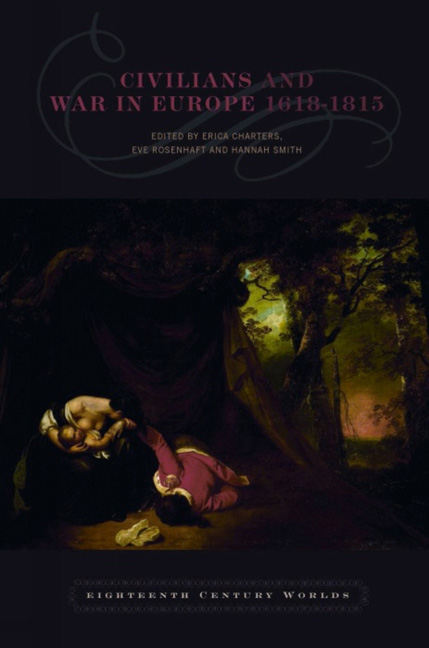Book contents
- Frontmatter
- Contents
- List of Contributors
- Acknowledgements
- List of Illustrations
- List of Abbreviations
- 1 Introduction
- Part I Suffering, Reconciliation and Values in the Seventeenth Century
- 2 Was the Thirty Years War a ‘Total War’?
- 3 Grotius and the Civilian
- 4 War, Property and the Bonds of Society: England's ‘Unnatural’ Civil Wars
- 5 Transitional Justice Theory and Reconciling Civil War Division in English Society, circa 1660–1670
- Part II The State, Soldiers and Civilians
- Part III Who is a Civilian? Who is a Soldier?
- Part IV Contradictions of the French Revolutionary and Napoleonic Wars
- Bibliography
- Index
5 - Transitional Justice Theory and Reconciling Civil War Division in English Society, circa 1660–1670
from Part I - Suffering, Reconciliation and Values in the Seventeenth Century
- Frontmatter
- Contents
- List of Contributors
- Acknowledgements
- List of Illustrations
- List of Abbreviations
- 1 Introduction
- Part I Suffering, Reconciliation and Values in the Seventeenth Century
- 2 Was the Thirty Years War a ‘Total War’?
- 3 Grotius and the Civilian
- 4 War, Property and the Bonds of Society: England's ‘Unnatural’ Civil Wars
- 5 Transitional Justice Theory and Reconciling Civil War Division in English Society, circa 1660–1670
- Part II The State, Soldiers and Civilians
- Part III Who is a Civilian? Who is a Soldier?
- Part IV Contradictions of the French Revolutionary and Napoleonic Wars
- Bibliography
- Index
Summary
THE CIVIL wars that raged across England, Ireland, Scotland and Wales from 1638 to 1651 began with conflict between King Charles I and his parliaments over the scope of royal authority and the direction of the post- Reformation Church of England. There were multiple and complex causal factors that led to war, including the personalities of the king and his chief advisors. One consequence was the king's execution in front of a crowd of thousands on a cold January morning in 1649. But this was a bloody revolution for Charles I's subjects as well as for the king himself. Direct and indirect total war dead from the civil wars in England has been estimated at 180,000 (3.6 per cent of the population) with estimated proportions higher still in Scotland and Ireland.
The civil wars created widespread turmoil and destruction that spread far beyond the battlegrounds. It is thought that one out of every four adult males took up arms, representing the departure of many fathers, brothers, uncles and nephews who were gone to kill or be killed. Contemporaries perceived that the conflict tore through the fabric of society to the very core of the family unit. Sir John Oglander wrote for posterity in his commonplace book, ‘Thou wouldest think it strange if I should tell thee there was a time in England when brothers killed brothers, cousins cousins, and friends their friends […] When thou wentest to bed at night, thou knewest not whether thou shouldest be murdered afore day.’ As Barbara Donagan's chapter has shown, the civil wars created a dynamic in which victims were all too familiar with their assailants. Thus, after the conflict was over, a desire for revenge was often personal and closely felt.
Parliament's victory over the Stuart monarchy led to the establishment of a republic between 1649 and 1660, during which a succession of regimes attempted to create a lasting political settlement through various constitutional experiments. The most durable of these were the Protectoral governments beginning in 1653, which were led by a monarch-in-all-but-name, Oliver Cromwell as Lord Protector. When Oliver died in 1658, and his son Richard failed to rally even the passive support that had sustained his father, the edifice quickly crumbled.
- Type
- Chapter
- Information
- Civilians and War in Europe 1618–1815 , pp. 68 - 84Publisher: Liverpool University PressPrint publication year: 2012

